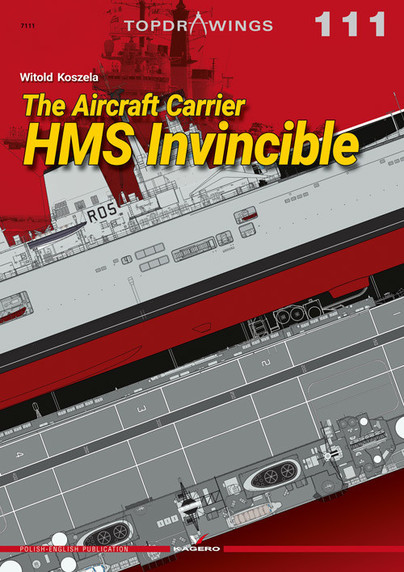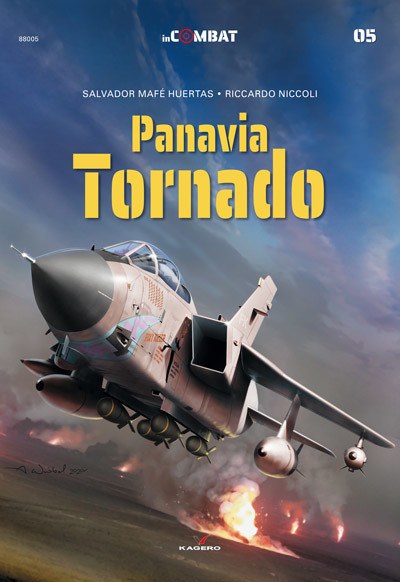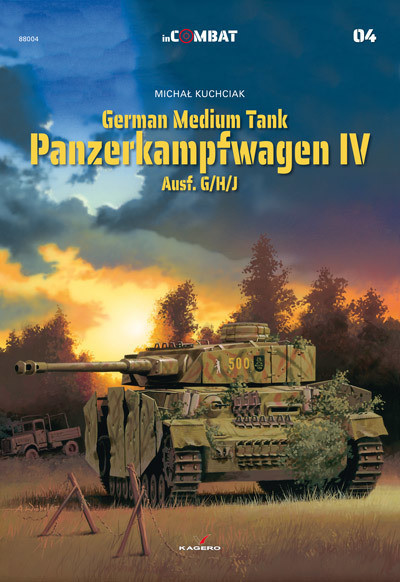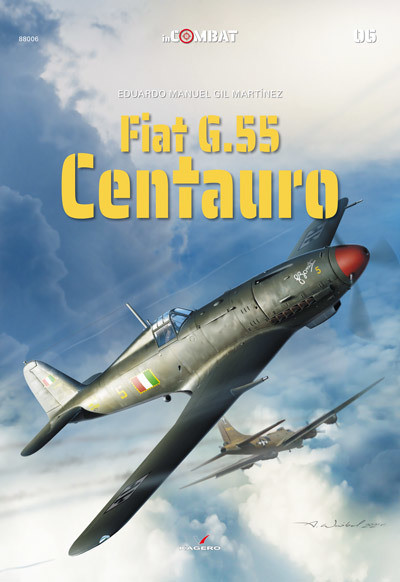Founded in 1995 and based in Central Europe, Kagero Publishing House is the biggest publisher and exporter of English-written publications about military history, publishing nearly 60 books a year. Kagero produces both books and magazines for a dedicated readership that can be found globally. It also draws on authors from around the world, from Poland, Canada, Australia, Great Britain and the US making this one of the most world renown and recognisable publishers on the market.

Format: Paperback
Pages: 24
ISBN: 9788366673410
Pub Date: 05 Jun 2021
Series: Top Drawings
Illustrations: Drawings sheets; colour profiles
Description:
The Focke-Wulf Ta 154 Moskito was a fast twin-engined German night fighter aircraft. The German Ta 154 night fighter which supposed to be an answer to the British Mosquito.

Format: Paperback
Pages: 20
ISBN: 9788366673281
Pub Date: 17 Apr 2021
Series: Top Drawings
Illustrations: drawing sheets, color profiles, poster
Description:
Messerschmitt Me 210 - German heavy fighter. Work on the design began in late 1930s with a goal of creating a versatile aircraft, equally capable as a fighter, dive bomber or a reconnaissance platform. The machine was an all-metal, low-wing monoplane, featuring twin vertical stabilizers.
Full-scale production of the Me 210 was launched in 1941. The aircraft was powered by a pair of Daimler-Benz DB 601F engines, each producing 959 kW of power. Messerschmitt Me 410 - German heavy twin-engine fighter and fast bomber, meant to be an improvement of the unsuccessful Me 210 design. The aircraft was equipped with new Daimler-Benz DB603A inverted V engines, rated at 1,750 and 1,850 hp. Powered by those engines the Me 410 was capable of speeds up to 628 km/h. The aircraft's armament consisted of two 7.92 mm MG 17 machine guns, a pair of 13 mm MG 131 machine guns and four remotely-controlled 20 mm MG 151 cannons. The Me 410 could also carry up to 1,000 kg of bombs. Thanks to its fairly long range and excellent performance characteristics, the aircraft was often employed in the bomber destroyer role.

Format: Paperback
Pages: 28
ISBN: 9788366673267
Pub Date: 17 Apr 2021
Series: Top Drawings
Illustrations: drawing sheets, color profiles
Description:
HMS Invincible was the lead ship of a class of British light aircraft carriers built between 1973 and 1985, originally designed as "through-deck cruisers" (TDC). This set them apart from conventional helicopter-carrying ships of the time, which typically featured a flight deck in the aft section of the vessel. Invincible-class carriers were the world’s largest warships powered by gas turbines and featured a modular design which allowed replacement and upgrades of various elements of propulsion system and equipment without the need for any structural modifications of the hull.
A characteristic feature of the Invincible class was a "ski-jump" ramp at the end of the flight deck designed for VSTOL Sea Harriers, which at that time were state-of-the-art combat platforms. As designed, the ship was to carry five Sea Harriers and nine Sea King helicopters (six ASW variants and three transports).

Format: Paperback
Pages: 24
ISBN: 9788366673274
Pub Date: 17 Apr 2021
Series: Top Drawings
Illustrations: drawing sheets, color profiles, poster
Description:
Sturmpanzer IV Brummbär (SdKfz 166, Sturmgeschütz IV für 15cm StuH 43) was a German self-propelled assault gun. Work on the design began in 1942 with a goal of creating a vehicle well suited for the demands of urban warfare. The gun was based on the PzKpfw IV Ausf.
E and F and, later, Ausf. G. Initially, the vehicle carried 15 cm StuH 43 howitzer, which was later replaced by a bespoke 15 cm StuH 23/1 L/12 weapon. Brummbär went into production in 1943.

Format: Paperback
Pages: 64
ISBN: 9788366673243
Pub Date: 01 Apr 2021
Series: Kit Build
Illustrations: 120 photos, 8 color profiles, A4 poster
Description:
In February 1938, the United States Navy opened a competition for a new fighter. Its maximum speed and operational ceiling were to exceed all the machines that the American aviation had at the time. Among others, the Chance Vought company entered the competition.
The Corsair was designed by a team of engineers led by Rex Beisel, the company's chief constructor. The prototype XF4U-1 was flown on May 29, 1940. The Corsair was powered by an eighteen-cylinder Pratt & Whitney R-2800 Double Wasp, the largest and the most powerful radial engine ever installed in a single-seat front fighter.

Format: Paperback
Pages: 28
ISBN: 9788366673236
Pub Date: 01 Apr 2021
Series: Top Drawings
Illustrations: drawing sheets, color profiles
Description:
The IJN battlecruiser Kongo was laid down on January 17, 1911 at Vickers, Sons & Co. at Barrow-in-Furness. The ship's hull was launched on May 18, 1912 and on August 16, 1913 the vessel entered service with the Imperial Japanese Navy.
In the years after she had been launched the Kongo had undergone two major reconstructions, each having a deep impact on the ship's characteristics and her overall arrangement.

Format: Hardback
Pages: 292
ISBN: 9788366673151
Pub Date: 01 Apr 2021
Illustrations: 200 photos; 32 Stereoscopic photos; 309 3D visualization; 8 3D anaglyphs; 1:200, 1:11, 1:50, 1:25 scale drawings
Description:
The battleships of the Kriegsmarine are only four vessels in total, which they managed to put into operational service in 1935-1941. The first two of those, Scharnhorst and Gneisenau, did not make as spectacular combat career as the other two. So far, no extensive memories of seamen sailing them have appeared, because their career practically boiled down to staying in a port, dock or roadstead until they sank or the hostilities ended.
The current publication is a form of compromise between combat operations, shortened in it to a necessary minimum, in the case of Scharnhorst, and a broader description of use of thewreck of Gneisenau after the war, and a photo albumthat represents life on the ship.

Format: Paperback
Pages: 68
ISBN: 9788366673175
Pub Date: 01 Apr 2021
Series: In Combat
Illustrations: Drawing sheets, 8 color profiles, 200 archival photos, poster
Description:
Panavia Tornado - a twin-engine fighter-bomber and a heavy, two-seater fighter plane with variable wing geometry produced in cooperation with Great Britain, Germany and Italy. There are three main versions of the Tornado aircraft: the Tornado IDS (Interdictor / Strike) attack version, the Tornado ADV (Air Defense Variant) interceptor version and the Tornado ECR (Electronic Combat / Reconaissance) electronic combat version.

Format: Paperback
Pages: 80
ISBN: 9788366673182
Pub Date: 01 Apr 2021
Series: In Combat
Illustrations: 6 Drawing sheets, 18 color profiles, 100 archival photos, A4 poster
Description:
Panzerkampfwagen IV (PzKpfw IV) - German medium tank from World War II. Until the fall of 1942, it was the heaviest tank in the army of the Third Reich. Initially, it was armed with a 75 mm short-barreled cannon, but as a result of the experience gained it was rearmed with long-barreled guns.

Format: Paperback
Pages: 40
ISBN: 9788366673212
Pub Date: 01 Apr 2021
Series: Camouflage & Decals
Illustrations: color profiles, free decal
Description:
The Messerschmitt Bf 109 was the most famous WW2 German fighter and a backbone of the Luftwaffe's fighter force. Its primary role was that of a high-speed, short-range interceptor. It first saw operational service in 1937 during the Spanish Civil War and was still in service at the dawn of the jet age at the end of World War II in 1945.
This book presents colour profiles of all versions from A to F and includes a decal sheet.

Format: Paperback
Pages: 82
ISBN: 9788366673250
Pub Date: 01 Apr 2021
Series: In Combat
Illustrations: 8 Drawing sheets, 9 color profiles, 156 archival photos, 3 maps, A4 poster
Description:
The Fiat G.55 Centauro was a single-engine single-seat World War II fighter aircraft. The FIAT G.
55 was a fighter whose merits were undoubtedly greater than those that can be deduced from the short building figures or from its use in service. The value of this aircraft was shown when after the WW2 it was ordered to FIAT to resume the manufacturing of the aircraft bringing to life a new G.55 versions named G.55A and G.55B.

Format: Paperback
Pages: 40
ISBN: 9788366673205
Pub Date: 01 Apr 2021
Series: Camouflage & Decals
Illustrations: color profiles, free decal
Description:
The book presents color profiles of selected tanks fighting on the Eastern Front, both on the Soviet and German sides. The book comes with a decal sheet.

Format: Paperback
Pages: 124
ISBN: 9788366673199
Pub Date: 01 Apr 2021
Series: Top Drawings
Illustrations: drawing sheets in 1/72 scale
Description:
List of planes whose drawings are in the book: Hanschel Hs 123, Arado Ar 196, Messerschmitt Bf 109 A-D,Messerschmitt Bf 109 E, Messerschmitt Bf 109 E-B, Messerschmitt Bf 109 T, Messerschmitt Bf 109 F, Me 262 Schwalbe, Dornier Do 17/Do215, Curtis P-40, P-51 Mustang, SBD Dauntless, Ki 43 Hayabusa, Saab J29 Tunnan.

Format: Paperback
Pages: 20
ISBN: 9788366673021
Pub Date: 31 Jan 2021
Series: Top Drawings
Illustrations: drawing sheets, color profiles
Description:
As the first functional jet engines became available, the RLM published a requirement for a reconnaissance aircraft capable of long-range patrols over Britain, all the way up to Scapa Flow. The task to build the machine was given to Arado, who put Rüdiger Kosin in charge of the design team. The initial E370 project was gradually tweaked and modified until it evolved into its final form as a single-seat aircraft powered by two jet engines in underwing pods, designated Ar 234.
In order to maximize the aircraft’s range, Arado’s design team embarked on a radical weight-shedding crusade. Among the components eliminated from the design was the conventional landing gear, which was replaced with a jettisonable three-wheel trolley used for take-offs and retractable skids mounted under the fuselage for landings. These design features were incorporated into the first A series prototypes, powered by Junkers Jumo 004A engines. The B-2 was a bomber version, with a maximum bombload of 1,500 kg and the B-2/N a night fighter version. The C-3 was the multi-purpose version, armed with two 20 mm MG 151/20 cannons beneath the nose.

















